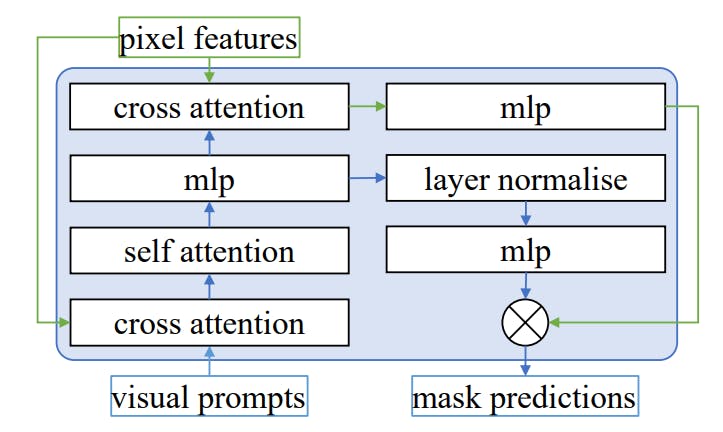Engaged employees are the backbone of a thriving business. 🚀
A motivated, proactive, and invested workforce is an asset that puts your business on the track for long-term success.
Despite the recent push towards employee-centricity and engagement, many businesses still miss the mark. Quite often, this is because they overlook the point of employee engagement activities.
We’ll let numbers tell the rest of the story. Here are some eye-opening employee engagement statistics to help build a positive work culture with motivated, committed employees. 📊
20 Employee Engagement Statistics to Drive Organizational Growth
What Is Employee Engagement?
Employee engagement is the level of emotional commitment that employees feel towards their organization, its mission, goals, values, and their roles within it.
Engaged employees don’t just work for the paycheck but are genuinely interested in contributing to business success.
Such engagement translates into improved morale, higher productivity, and collaborative action.
For example: Maya, the head of product development at an app development company, notices her team’s morale slipping after months of high-pressure deadlines. To address this, she introduces regular check-ins for open discussions, starts “Peer Recognition Fridays,” and offers flexible work hours to help the team recharge and work at their own pace.
These initiatives quickly boost morale, improve collaboration, and reduce burnout. Maya’s proactive approach to fostering a positive and engaging work culture leads to higher productivity and team retention, showing that true engagement comes from creating an environment where employees feel valued. 🌱
Benefits of High Employee Engagement
Improved employee engagement rate has several benefits. Let us look at some of them:
- Increased focus: Increases productivity, helping these employees outperform their colleagues as they focus better on their work
- Decreased burnout rates: Reduces feelings of overwhelm, fosters positive emotions, and lowers stress levels. Nearly 40% of engaged employees face less burnout compared to the rest, as they have higher levels of positive emotions
- Positive brand image: Cultivates motivation, fosters a supportive environment, and enhances company reputation
- Effective collaboration: Boosts innovation, encourages idea sharing, and strengthens teamwork
20 Employee Engagement Statistics
Let’s dive into the top 20 employee engagement statistics that will help you make well-informed decisions, so you make the most of its benefits! 🤝
1. 77% of global employees feel disengaged at work
This indicates that only about 23% of employees are engaged or not actively disengaged at work. Such a low number of actively engaged employees causes a drop in productivity, lower morale, and increases the probability of employees leaving frequently.
Here’s a way for you to reduce that percentage at your company.
While there are multiple approaches to tackling this problem, businesses need to seek effective solutions to streamline engagement. The Employee Engagement Template is a great tool for measuring and improving employee engagement levels more effectively.
Some of the key offerings of this template include:
- Track engagement metrics to identify employee strengths and areas of improvement
- Customize engagement surveys to capture specific parameters related to work, culture, etc.
- Analyze results with built-in reporting features to develop targeted action plans
Templates like these add structure to how companies engage their workforce and win over the actively disengaged employees.
2. HR-led employee engagement strategies improve results by 49%
A lack of employee engagement is a widespread organizational headache, and solving this calls for a concerted, top-down approach. Here’s why HR-led employee engagement initiatives have an exponential impact: seeing how to drive engagement levels by 49%!
HR teams harness workforce analytics platforms to conduct a company-wide SWOT analysis.
Simultaneously, they employ employee engagement software solutions to tailor engagement programs that satisfy the employees’ needs and the company’s culture. This two-pronged strategy empowers the HR department to pinpoint problem areas and address these challenges proactively.
As a result, they have a greater impact than sporadic, isolated attempts at the team or departmental levels!
3. Companies with a highly engaged workforce notice a 21% jump in profitability
A highly engaged workforce directly contributes to business success. This correlation makes sense, considering engaged employees are more invested in their work and contribute meaningfully to building a positive work environment.
It leads to improved organizational performance, which maximizes profitability and improves the bottom line.
In fact, employee engagement statistics reveal that it has emerged as a key differentiator in earnings per share (EPS) since the economic rebound of 2009. Companies with engaged workforces gained and grew their EPS at a faster rate than their industry equivalents.
Such profits are only possible with effective streamlining of the engagement process. A top pick here is , a versatile tool that increases organizational profits by transforming how you work.


While it wears several hats, using for human resources is the gateway to high employee engagement. Create a centralized hub to track employee performance and engagement for better alignment of your workforce.
Streamline your company’s application process with templates, automation, and custom statuses to save time. Such engagement solutions equip your new hires and existing employees for success, driving higher company profits!
4. Engaged employees increase workplace productivity by 22%
Highly engaged business units contribute to a 22% boost in workforce productivity. This happens when employees feel connected to their work and the company’s mission. As a result, you’ll find them putting more effort into their work and demonstrating higher efficiency in their daily tasks.


Businesses may harness such productivity incline using employee productivity tracking tools like . Use it to set clear goals, track daily progress, and maintain transparency across all tasks. The resulting system of accountability and collaboration offers an additional boost to workforce productivity and engagement.
5. Employee disengagement costs the global economy an estimated $8.8 trillion annually
Disengaged employees often contribute minimally while consuming resources. When factoring in their lack of enthusiasm, decreased performance, lost productivity, and absenteeism, the cumulative loss arising from employee disengagement could be a staggering $8.8 trillion annually!
The financial drain impacts businesses of all sizes. However, organizations can reverse this by implementing employee engagement strategies like regular feedback, satisfaction surveys, employee recognition programs, and professional development initiatives.
At the same time, businesses need to create a work culture that prioritizes employee well-being and better work-life balance.
6. Highly engaged teams see an 81% difference in absenteeism
Companies with strong employee engagement witness an 81% drop in absenteeism. After all, employee engagement involves supporting your employees’ physical and mental health.
Employee engagement strategies may include effective workload management, flexible working hours, a focus on work-life balance, collaborative working, etc., to help employees become more adept at handling workloads and stress without experiencing burnout.
Such a holistic approach to their well-being improves job satisfaction and attendance rates. Employees are less likely to take sick days and more committed to showing up regularly.
7. Employee turnover rate is 43% lower in companies prioritizing employee engagement
Highly engaged employees are 87% less likely to quit their jobs, which is next in our list of employee engagement statistics—improving employee engagement lowers employee churn by as much as 43%. This is because engaged employees feel a greater sense of connection and loyalty to their company’s goals.
The resulting job satisfaction makes it less likely for them to quit, allowing your business to retain talent longer. Employee retention saves organizations a pretty penny that would otherwise go into recruiting, onboarding, and training new hires.
💡 Pro Tip: Use employee engagement statistics to establish realistic benchmarks that reflect industry standards. This way, you can track your organization’s progress over time and set measurable goals for improvement. 🔍
8. 33% of employees cite boredom as the main reason for quitting a job
Boredom is one of the top factors resulting in employee turnover. In fact, 33% of employees cite it as the main reason for leaving a job! Adding a new challenge from time to time can keep employees feeling engaged and inspired.
Doing so will keep your employees on their toes and prevent them from feeling uninspired or underutilized. New and exciting work captures their interest, making them less likely to seek similar challenges or consider opportunities at a new job.
Consider investing in employee survey software to gauge employee satisfaction levels. Tools like allow you to understand your employees better, which helps you create an environment of trust and growth.
With the Employee Feedback Template, you can learn what your employees think about their positions or encourage them to suggest changes they would love to see.
Here are some of its key features:
- Provides a platform for employees to put their ideas forward for their managers to see and understand
- Improves communication among employees for better collaboration and recognition in the workplace
- Get a clear idea about employee sentiments and promote a culture of change and positivity
Such templates allow employees to submit their ideas, and based on their feedback, you can integrate challenges they will enjoy.
9. Workers who take breaks regularly have 13% higher productivity
Regular breaks allow employees to reset, refresh, and return to tasks with a renewed mindset. Given this, it’s no surprise that taking breaks drives employee productivity by 13%!
Pomodoro is a great technique for working in intervals. It encourages users to take short, structured breaks after deep work periods to reach a new plane of productivity.
Try Pomodoro Work Intervals using Brain to manage your time effectively. Schedule these work-break intervals based on your preferences and working styles to maintain optimal focus without burnout.
10. Fast feedback improves employee performance and motivation by nearly 4x
Fast, constructive feedback improves employee performance and motivation by nearly fourfold (3.6x if you’re a stickler). To facilitate this, businesses must invest in manager training that focuses on delivering feedback empathetically and objectively.
Plus, this must be paired with instant, clear, and contextual feedback delivery to reduce uncertainty and allow quick course correction.
For the latter, consider using as your feedback software. allows managers and employees to start a meaningful conversation across multiple channels.


For instance, Chat is a great way to share direct feedback in real time. Stay connected with your teams with , which integrates projects, tasks, and documents for detailed feedback on the go.
Alternatively, use the comments or @mentions feature to communicate asynchronously and with context.
Reassure employees that their voices matter 👏
These employee engagement statistics serve as good reminders to leaders and department heads to create the right conditions for enhanced employee engagement. This starts with understanding whether your team members feel valued and supported.
Once you gather feedback, show your employees that their feedback directly influences positive changes, helping them feel seen and appreciated as essential contributors to the company’s growth.
11. 6 out of 10 employees feel more engaged and motivated when recognized by managers
Nearly 60% of employees seek recognition from organizational leaders or managers. Acknowledging team or individual achievements and contributions goes a long way in sowing the seeds of motivation.
A simple employee appreciation message makes a difference in developing loyalty and boosting morale.
makes it easy for businesses to run an effective employee recognition program. The task management feature allows you to set automatic reminders that prompt managers and executives to share encouraging messages and celebrate milestones, ensuring no effort or achievement goes unnoticed!
Celebrate small wins 🥳
Acknowledging small achievements helps employees feel appreciated and recognized. Celebrate individual or team accomplishments regularly to reinforce a positive work culture where every effort counts.
12. 94% of employees are more engaged if companies invest in their professional growth
This is one of the employee engagement statistics that feels more intuitively obvious. Businesses that invest in their employees’ professional and personal growth would see higher employee engagement and retention levels.
Consider using the Employee Development Plan Template, which takes a more holistic approach to employee development. It allows managers to:
- Create personalized development plans that align with employee goals
- Track progress and schedule regular check-ins
- Link professional growth to company objectives
- Create a culture of career advancement and continuous learning
The template allows you to provide career advancement opportunities and deliver what employees expect.
Encourage personal growth 🚀
Support employees’ career goals with learning opportunities, workshops, or mentorship programs. Helping them grow within the company shows that you’re invested in their success as individuals, not just as employees.
13. Engaged workforces earn 10% higher customer satisfaction ratings
A company’s success isn’t just a measure of its revenue or profitability. It also includes external variables like how customers perceive the organization.
Businesses that focus on building engaged teams witness a 10% increase in customer satisfaction ratings. Engaged employees are more likely to deliver superior customer service, maintain positive client relationships, and respond proactively to issues.
They connect with the company’s mission and vision, which are reflected in their client communications. The result is better customer service, rich with care, comfort, and concern. This strengthens brand value and loyalty and provides a competitive edge in the marketplace.
14. Employees who have a “best friend” at work are 2.5x more likely to be engaged
While we may separate our work and personal lives, we always need some form of companionship at work. In this vein, employees with a best friend at work are 2.5 times more likely to stay engaged and committed to their role.
This illustrates how having a strong social connection at work is a critical factor in employee engagement.
Cultivating camaraderie at the workplace improves collaboration and morale. Bringing teams together is even more crucial in a remote and hybrid work environment, which is more prone to isolation.
Build team bonds 🤗
Employee engagement statistics like this one show how crucial team bonds are! You can foster team spirit by organizing team-building activities, virtual coffee breaks, or in-person get-togethers. Stronger team connections can increase collaboration and make employees feel more rooted in the company culture.
15. 77% of employees report higher productivity levels when working from home
An impressive 77% of remote workers register higher productivity levels than on-site employees. The increase in productivity could be due to fewer office distractions, flexible working hours, and improved work-life balance.
A hybrid work culture is here to stay, and businesses should make remote work a part of their culture.
That said, the issue of disengagement is higher amongst remote workers, thank to the isolation and lack of human connection that comes with it. That’s why you should equip teams with platforms like . brings fully remote workers and on-site employees to the same page.
16. 95% of employees experience video meeting fatigue
The alarming rise of virtual meetings has resulted in 95% of employees experiencing video meeting fatigue. The constant stream of digital communication, especially where participants are required to keep their cameras on, negatively impacts their mental health.
This results in exhaustion, burnout, and disengagement. Let’s also not forget that frequent virtual meetings hinder productivity, especially when employees do not get sufficient breaks or flexibility. Companies should make intentional efforts to keep remote employees engaged.
Tools like the Calendar View on help maintain schedules, set clear expectations, and set reminders so virtual meetings aren’t as overwhelming.
17. 85% of employees feel engaged when internal communications are effective
Effective internal communication is the lifeblood of high employee engagement. An effective internal communications plan facilitates the transparent flow of information, strengthens trust, establishes collaboration, and cultivates a sense of belonging.
Use ’s Internal Communications Template to streamline this process. It helps with:
- Setting up consistent communication channels across teams and departments
- Establishing communication schedules and regular updates
- Tracking communication tasks and assignments
- Improving team alignment and reducing information silos
A well-rounded internal communication plan keeps all the on-site and remote employees in the loop.
18. Organizations focusing on DEI witness 31% happier employees
Committing to the principles of Diversity, Equity, and Inclusion (DEI) amplifies the employee voice. When your employees feel heard and valued, they’ll feel more engaged and reward you with innovation.
Use ’s Action Plan Template for DEI to develop a practical plan to meet your DEI goals. This template allows teams to:
- Build detailed DEI strategies and milestones
- Monitor progress with timelines and task assignments
- Encourage inclusive practices throughout the organization
- Create a diverse and collaborative ecosystem
Such a commitment to DEI values reinforces company culture.
19. Companies with a thriving work culture attract 33% higher revenue growth
Since we’re on the topic of work culture, let’s also discuss how it influences a business’ financial success. Companies that boast of a strong, positive culture see 33% higher revenue growth than those that fail to do so.
A healthy work culture drives employee engagement, productivity, and satisfaction, contributing to the company’s bottom line.
A people-first company culture nurtures a strong connection between employers and employees to drive positive outcomes.
20. 71% of executives attribute employee engagement to organizational success
At this point, it should come as no surprise that employee engagement is critical for organizational success. Engaged employees are more proactive and motivated to give their best.
The Employee Engagement Action Plan embraces a more strategic approach to employee engagement. It helps you set measurable goals, tracks employee engagement initiatives, and involves the leadership in employee recognition.
Drive Employee Engagement for Better Growth in the Workplace
High employee engagement has a powerful positive impact on any workplace. Organizations that prioritize analyzing employee engagement statistics and take action based on these insights experience notable improvements in performance, retention, and overall success, as the data above demonstrates.
Employee engagement requires strategic planning and understanding your employees’ sentiments clearly. Tools like help you recognize your team’s expectations clearly so you can make decisions and changes that motivate your workforce to work better. You’ll discover that helps realize employee engagement goals in more ways than one.
Sign up for today to tap into your employees’ pulse! ✨


Everything you need to stay organized and get work done.

















